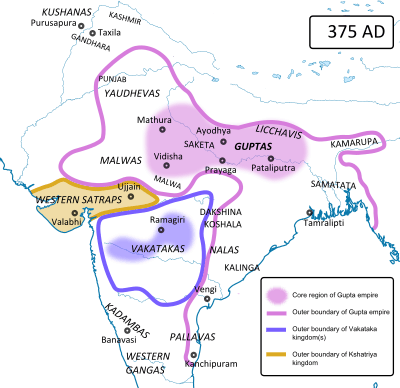Dakshina Kosala

Dakshina Kosala (IAST: Dakṣiṇa Kosala, "southern Kosala") is a historical region of central India. It was located in what is now Chhattisgarh and western Odisha.[1]
Legends
In ancient Indian literature as well as the epic Ramayana, Mahabharata and Puranas there are many references to the ancient Kosala Kingdom of northern India. Surya Vanshi Ikshvaku dynasty kings ruled Kosala with Ayodhya as their capital. Sri Ramachandra was a king of that clan, based on whose character and activities, the Ramayana was written. This work mentions that after Rama, the kingdom was divided among his two sons, Lava and Kusha. North Kosala went to Lava as his share with Shravasti Nagari as his capital while Kusha received South Kosala. He established his new capital, Kushasthalipura on the riverKushavrate near the Vindhya mountain range, which divides north and south India. Kushasthalipura is identified as near Malhar in the present-day Bilaspur district of Chhattisgarh state.
As part of his military campaigns, Sahadeva targeted the kingdoms in the regions south of the Indo-Gangetic Plain. Vanquishing the invincible Bhismaka, Sahadeva then defeated the king of Kosala in battle and the ruler of the territories lying on the banks of the Venwa, as well as the Kantarakas and the kings of the eastern Kosalas.[2]
History
After the fall of the imperial Guptas, the Dakshina Kosala region was ruled by a number of small dynasties, including the Amarāryakulas, the Panduvamshis of Mekala (Pāṇḍavas of Mekala), the Panduvamshis of Dakshina Kosala (Pāṇḍuvaṃśīs of Śripura), and the Sharabhapuriyas. The chronology of these dynasties not very clear, because their inscriptions are dated in regnal years instead of a calendar era.[3] The only ancient inscription found in this region that appears to be dated in a calendar era is the Arang copper-plate inscription of Bhimasena II of Sura family. However, it is not connected to any other records from the area, and therefore, is not much useful for reconstructing the region's chronology.[4]
The Pāṇḍavas of Mekala are known from two Malhar inscriptions issued by king Śūrabala, the last member of the dynasty.[5] The king claimed descent from the legendary hero Pāṇḍu of the lunar dynasty (somavaṃśa).[6]
The Amarāryakulas (Amarārya family) are known from the Malhar inscription of Vyaghraraja.[7] D. C. Sircar believes this family to be same as the Sharabhapuriyas, Ajaya Mitra Shastri believes it to an independent dynasty, while Hans T. Bakker believes it to be a vassal of the Sharabhapuriyas.[8]
The Sharabhapuriyas initially ruled as Gupta vassals, and may have fought with the Nalas of Pushkari.[9] They laid foundation of the distinct Dakshina Kosala style of art and architecture.[10]
The Panduvamshis of Dakshina Kosala seem to have been related to the Panduvamshis of Mekala, and initially served as feudatories to the Sharabhapuriyas.[11] The early kings of the dynasty were Vaishnavites, but its last known king Mahāśivagupta Bālārjuna called himself a devotee of Shiva (parama-māheśvara), and also patronized the Buddhists. The Chinese traveler Xuanzang visited the region during his reign, and described his kingdom ("Kiao-sa-lo" or Kosala) as follows:[12]
| “ | The capital is about 40 li round; the soil is rich and fertile, and yields abundant crops. [...] The population is very dense. The men are tall and black complexioned. The disposition of the people is hard and violent; they are brave and impetuous. There are both heretics and believers here. They are earnest in study and of a high intelligence. The king is of the Kshattriya race; he greatly honours the law of Buddha, and his virtue and love are far renowned. There are about one hundred saṅghārāmas, and somewhat less than 10,000 priests; they all alike study the teaching of the Great Vehicle. There are about seventy Deva temples, frequented by heretics of different persuasions. Not far to the south of the city is an old saṅghārāma, by the side of which is a stūpa that was built by Aśoka-rāja. | ” |
The Panduvamshis of Dakshina Kosala may have been related to the later Somavamshi dynasty, who ruled in present-day Odisha.[13]
See also
References
- ↑ Nava Kishor Das (2012). Odisha. Seagull. p. 5. ISBN 978-81-7046-293-4.
Dakshina Kosala is the territory now divided in the districts of Chhattisgarh and Sambalpur and neighbouring areas of western Odisha.
- ↑ Mahabharata, Book 2, Chapter 30
- ↑ Hans T. Bakker 1994, p. 1.
- ↑ Hans T. Bakker 1994, pp. 1-2.
- ↑ Hans T. Bakker 1994, p. 3.
- ↑ Hans T. Bakker 1994, p. 5.
- ↑ Hans T. Bakker 1994, p. 6.
- ↑ Hans T. Bakker 1994, pp. 7-8.
- ↑ Hans T. Bakker 1994, p. 10.
- ↑ Hans T. Bakker 1994, p. 13.
- ↑ Hans T. Bakker 1994, p. 14.
- ↑ Hans T. Bakker 1994, p. 21.
- ↑ A. M. Shastri I 1995, pp. 172-175.
Bibliography
- Hans T. Bakker (1994). "Observations on the History and Culture of Dakṣiṇa Kosala". In Nalini Balbir; J Bautze. Festschrift : Klaus Bruhn zur Vollendung des 65. Lebensjahres. Reinbek: Inge Wezler. pp. 1–66. OCLC 37840411.
- Ajay Mitra Shastri (1995). Inscriptions of the Śarabhapurīyas, Pāṇḍuvaṁśins, and Somavaṁśins: Part I. Motilal Banarsidass. ISBN 978-81-208-0635-1.